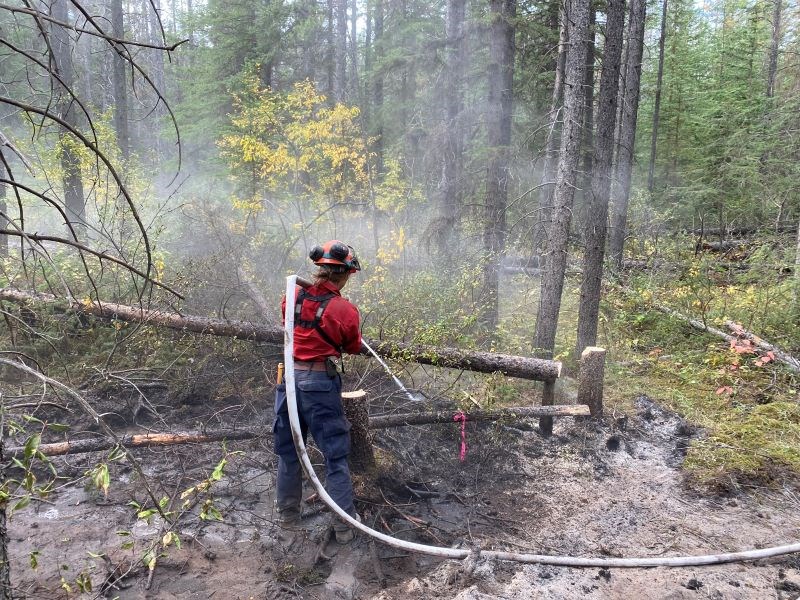Scott Hayes, Local Journalism Initiative Reporter | [email protected]
As autumn sets over the Chetamon Wildfire now held at 6,000 hectares, other shifts are occurring behind the scenes.
Parks Canada’s national-level firefighters have now pulled back to let local crews within Jasper National Park return to manage operations.
It all reflects on how the wildfire has shifted down from being a complex operation during the days when the powerlines went down.
“All we're needing to do right now is patrol those priority sections of the perimeter and make sure that we don't have any hotspots that are really close to the line,” said Local Incident Commander Landon Shepherd.
Everything has been scaled back into a holding pattern that is expected to last over the winter. There has been zero growth in suppression zones of the wildfire since Sept. 11, while the western flank is being allowed to slowly burn into the Snake Indian Valley.
This time of year is also very helpful in terms of moderating fire behaviour, Shepherd said, as shorter days and a new angle to the sun offers more shade on large portions of different slopes and valleys.
Overnight recovery also helps greatly. That term is firefighting jargon that refers to overnight relative humidity as things get cool in the fall, often leading to dew and frost in the mornings. That starts to extinguish portions of the fire and it makes it harder for things to dry out and start burning later in the day.
“Overnight recovery is a helpful thing for controlling fire spread and growth. We're benefiting from that. We're going to have good extinguishment of the perimeters and all the areas where we had previous concerns. We're in good shape… at this point of the year and at this point on the fire operation.”
Firefighters have spent the last few days rolling and demobilizing approximately 30 kilometres of firehose, as well as pumps and temporary radio repeaters, from the Chetamon Wildfire. Those repeaters helped communications between Parks Canada staffers who were still dealing with multiple other issues during the early days of the wildfire, namely bears frequenting the town, the beginning of the elk rut and the ongoing demands caused by wildlife traffic jams.
“In the first couple of days, we actually were able to implement these separate repeater channels and set them up on a couple of the mountains so that we could have communications that weren't overlapping with all the other regular operations that were still going on in a very busy place,” Shepherd said.
All partner organization firefighters and resources have now been released as well, leaving two Parks Canada crews and one helicopter to keep regular eyes on the fire’s status. The area closure has been extended westward to include room for its potential but limited growth in that direction as an effort to support future community protection and ecological benefits.
There might be hot spots, spot fires and smoke in the area because of this. That smoke might become visible from Highway 16. Shepherd said that, if necessary, fire suppression actions will be taken if and when people or infrastructure ever become at risk due to the ongoing fire.
The Jasper Airstrip also reopened on Tuesday as the airspace returned to the “all clear” for regular flight operations.




